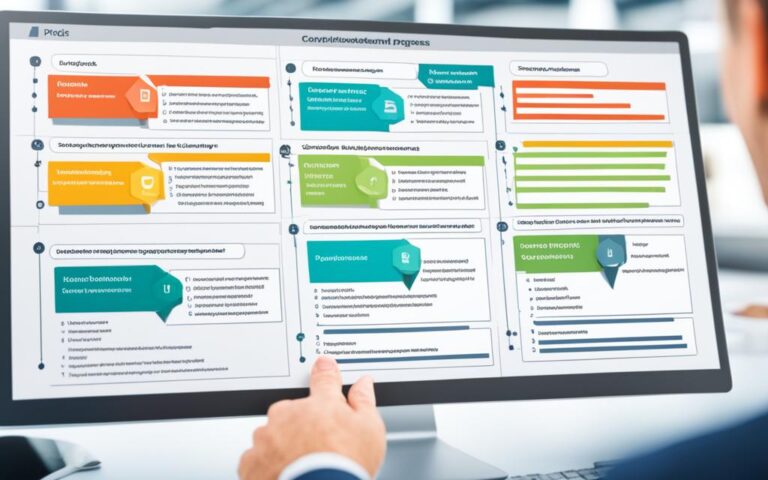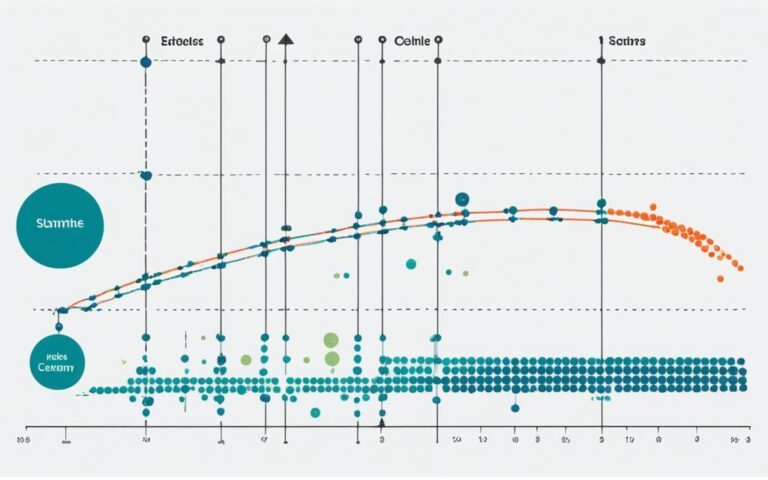Oppugning Agile: A Critical Look at Agile Methodologies
Agile methodologies have taken the software development world by storm, promising increased flexibility and collaboration. But before jumping on the agile bandwagon, it’s essential to examine its strengths and weaknesses critically. In this article, we will embark on a journey of critique, exploring the nuances and complexities of agile methodologies.
From the moment agile methodologies emerged, they have sparked debates and ignited discussions among developers, project managers, and stakeholders alike. While proponents hail agile as the key to innovation and efficiency, dissenters question its effectiveness in certain contexts and highlight potential drawbacks.
Let’s dive headfirst into the critique of agile methodologies, shining a light on the corners that often go unnoticed and raising questions that demand answers. As we navigate through the intricacies of agile, we will unravel its pitfalls and examine the constraints that agile practitioners must confront.
Buckle up and prepare to challenge the status quo as we embark on a critical expedition through the realm of agile methodologies. Together, we will uncover the truth behind the curtain of flexibility and collaboration, exploring both the triumphs and setbacks that come hand in hand with agile development.
The Flaws of Agile
Despite its many benefits, agile methodologies have been widely critiqued and have their fair share of limitations. Let’s take a closer look at some of the flaws that have been identified in agile approaches.
Lack of Documentation and Long-term Planning
One major criticism of agile methodologies is the tendency to prioritize short-term iterations and frequent feedback over comprehensive documentation and long-term strategic planning. While these quick iterations promote adaptability, they can sometimes result in a disregard for thorough documentation, making it challenging to maintain a clear record of project progress and decisions.
Scope Creep and Project Delays
The constant changes and iterations in agile methodologies can inadvertently lead to scope creep, where project requirements expand beyond the initial scope. This can result in project delays, as the focus shifts from delivering quality results to constantly accommodating new changes and requests.
Insufficient Scalability for Large Projects
Agile methodologies are inherently designed for small, cross-functional teams. While they excel in delivering quick results and promoting collaboration, they may not be as effective when it comes to larger, more complex projects. Scaling agile practices to accommodate larger teams and more intricate requirements can be challenging and may lead to inefficiencies and communication gaps.
Over-reliance on Team Expertise
Agile methodologies heavily rely on the expertise and effectiveness of the team members. While collaboration is encouraged, there is the risk of individual biases or skill gaps affecting decision-making and project outcomes. This over-reliance on team expertise can undermine the effectiveness of agile methodologies and hinder project success.
To address these flaws and maximize the potential of agile methodologies, organizations should be mindful of their limitations and consider implementing suitable strategies and processes. It is crucial to strike a balance between adaptability and comprehensive planning, ensuring that agile practices align with the specific needs and characteristics of each project.
Challenges in Agile Implementation
Implementing agile methodologies can be a daunting task for organizations, as it brings forth various challenges that need to be overcome. One of these challenges is the resistance to change from traditional project management approaches. In a world accustomed to following set plans and predefined processes, embracing the agile mindset requires a significant shift in thinking and a cultural transformation within the organization.
“Change is the only constant,” said Heraclitus, and in the realm of agile methodologies, this holds true. Agile emphasizes adaptability, collaboration, and flexibility, which can be met with skepticism and hesitation from stakeholders who are accustomed to the certainty and structure offered by traditional project management methodologies. Overcoming this resistance and gaining buy-in from key decision-makers is crucial for the successful implementation of agile.
Another challenge that organizations face when implementing agile methodologies is the lack of clear roles and responsibilities within agile teams. Unlike traditional project management, where clear hierarchies and assigned roles are defined, agile teams operate in a more self-organized and cross-functional manner. While this brings about numerous benefits, such as increased collaboration and accountability, it can also lead to confusion and conflicts within the team.
“Agile without clear roles can be like a ship without a captain – adrift, lost, and struggling to stay on course.”
Addressing these challenges requires a careful approach and implementation strategy. Organizations should invest in change management initiatives, ensuring that all stakeholders are involved throughout the agile transition and have a clear understanding of the benefits and expected outcomes. Providing comprehensive training and coaching to team members will help them adapt to their new roles and responsibilities within agile teams, fostering a sense of clarity and purpose.
Additionally, establishing strong communication channels and promoting a culture of transparency can help mitigate conflicts and clarify expectations within agile teams. Regular retrospective meetings and open forums for discussion enable team members to voice their concerns, share feedback, and collectively solve challenges that arise during the implementation process.
Overall, while implementing agile methodologies may present challenges, organizations can overcome these hurdles by embracing change, fostering clear roles and responsibilities, and cultivating a culture of collaboration and transparency.
Challenges in Agile Implementation
| Challenge | Solution |
|---|---|
| Resistance to change from traditional project management approaches | Invest in change management initiatives, involve stakeholders throughout the process, provide training and coaching |
| Lack of clear roles and responsibilities within agile teams | Establish strong communication channels, promote transparency, conduct regular retrospective meetings |
Conclusion
Agile methodologies have been a game-changer in the software development industry, revolutionizing the way projects are executed and delivering numerous benefits. However, it is crucial to approach these methodologies with a critical mindset. By acknowledging the flaws and challenges that come with agile implementation, organizations can navigate its complexities more effectively and maximize its potential.
While agile methodologies offer flexibility and adaptability, they are not a one-size-fits-all solution. It is important for organizations to consider the specific needs and context of each project before adopting agile. This critical evaluation ensures that the chosen methodology aligns with the project goals and objectives, leading to better outcomes.
Awareness of the limitations of agile, such as the potential lack of documentation and long-term planning, allows organizations to address these concerns proactively. By striking the right balance between agility and structure, organizations can mitigate scope creep and minimize project delays. Clear communication, role definition, and training can help overcome the challenges faced during the implementation phase, fostering a smooth transition to agile methodologies.
In conclusion, a critical look at agile methodologies enables organizations to make informed decisions and utilize them effectively to drive success in their projects. By understanding the strengths and weaknesses, organizations can tailor agile methodologies to suit their unique requirements, leading to improved project outcomes and enhanced collaboration within teams. Embracing agile while being mindful of its limitations is the key to leveraging its power and reaping the many benefits it has to offer.
FAQ
What are the main criticisms of agile methodologies?
The main criticisms of agile methodologies include a lack of documentation and long-term planning, scope creep, and project delays.
What challenges can organizations face when implementing agile methodologies?
Organizations may face resistance to change from traditional project management approaches and confusion regarding roles and responsibilities within agile teams.
Should all organizations adopt agile methodologies?
Agile methodologies are not a one-size-fits-all solution. Organizations should carefully consider their specific needs and context before adopting agile.
How can organizations address the flaws and challenges in agile implementation?
To address the flaws and challenges in agile implementation, organizations should emphasize the importance of comprehensive documentation, strategic long-term planning, and clear communication within agile teams.
Are there any potential drawbacks to using agile methodologies?
Yes, potential drawbacks of agile methodologies include the possibility of scope creep, project delays, and resistance to change from stakeholders accustomed to traditional project management methodologies.










